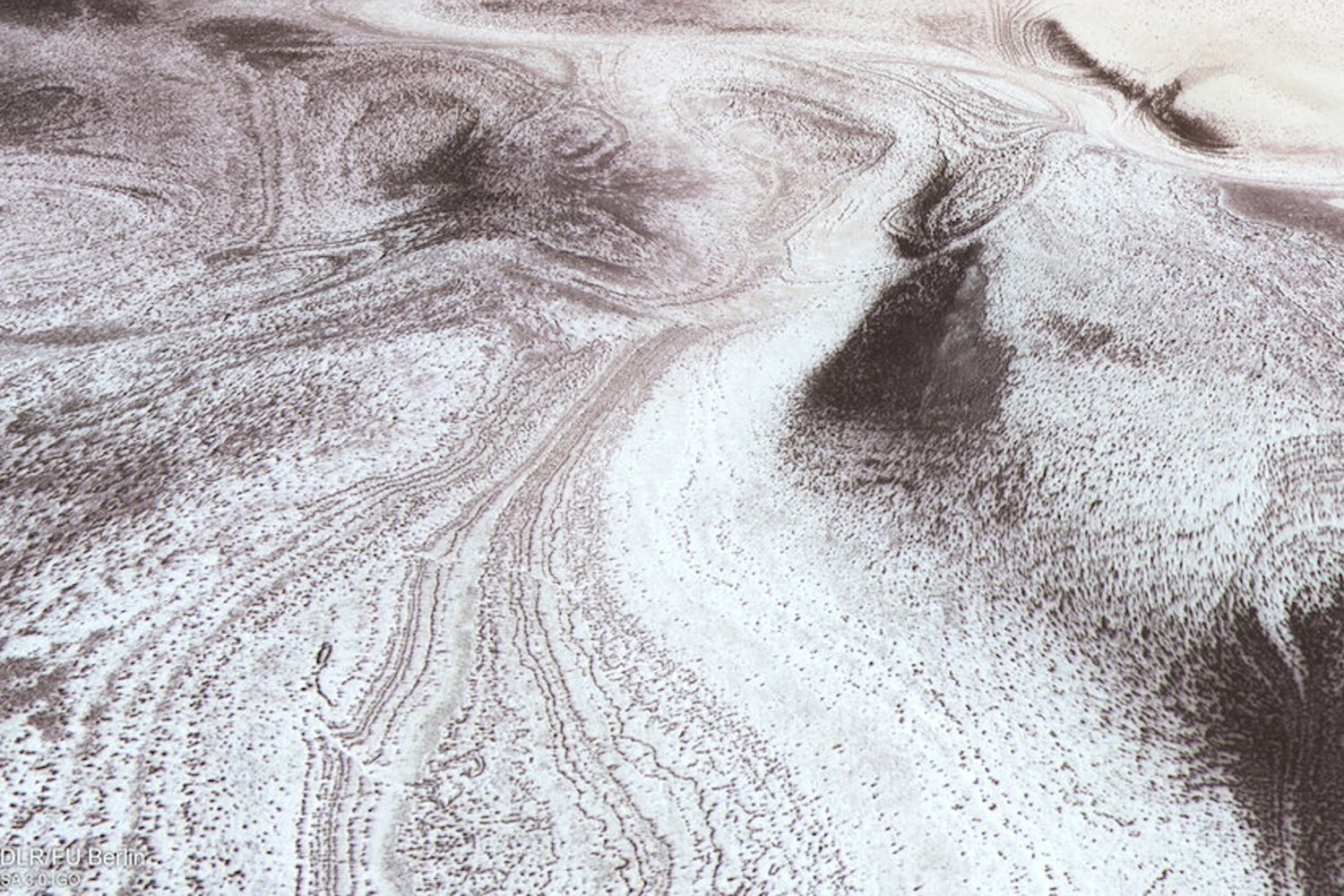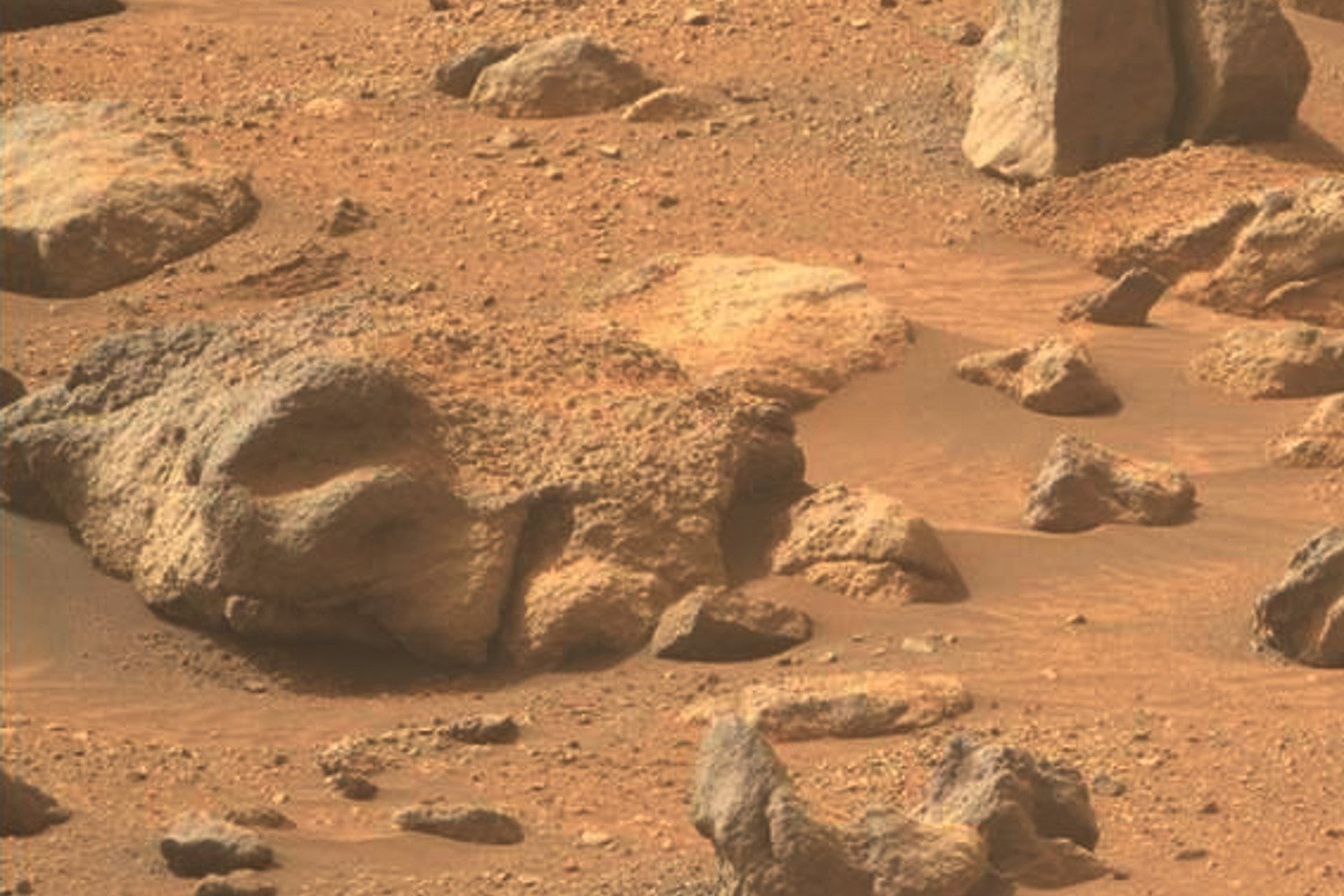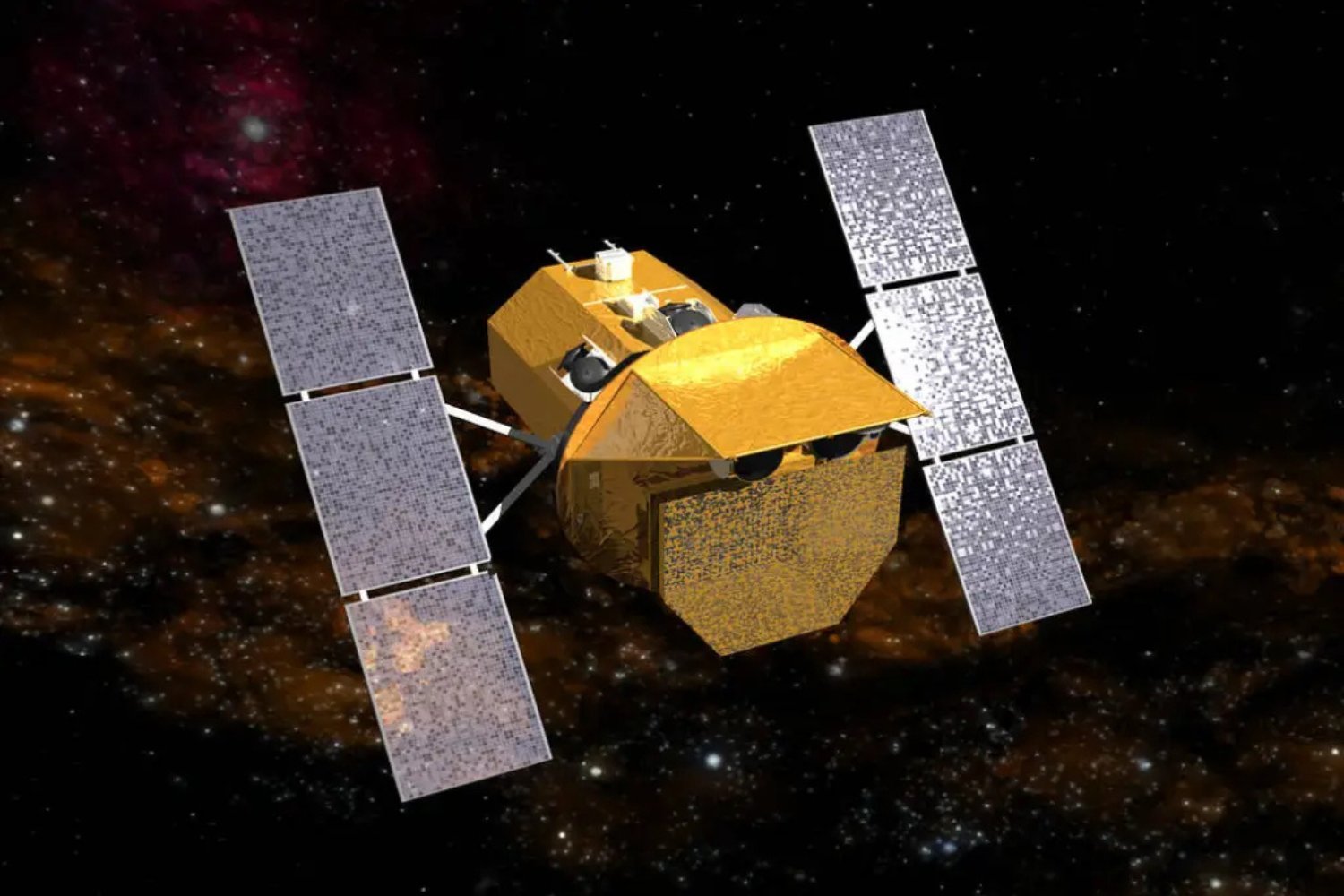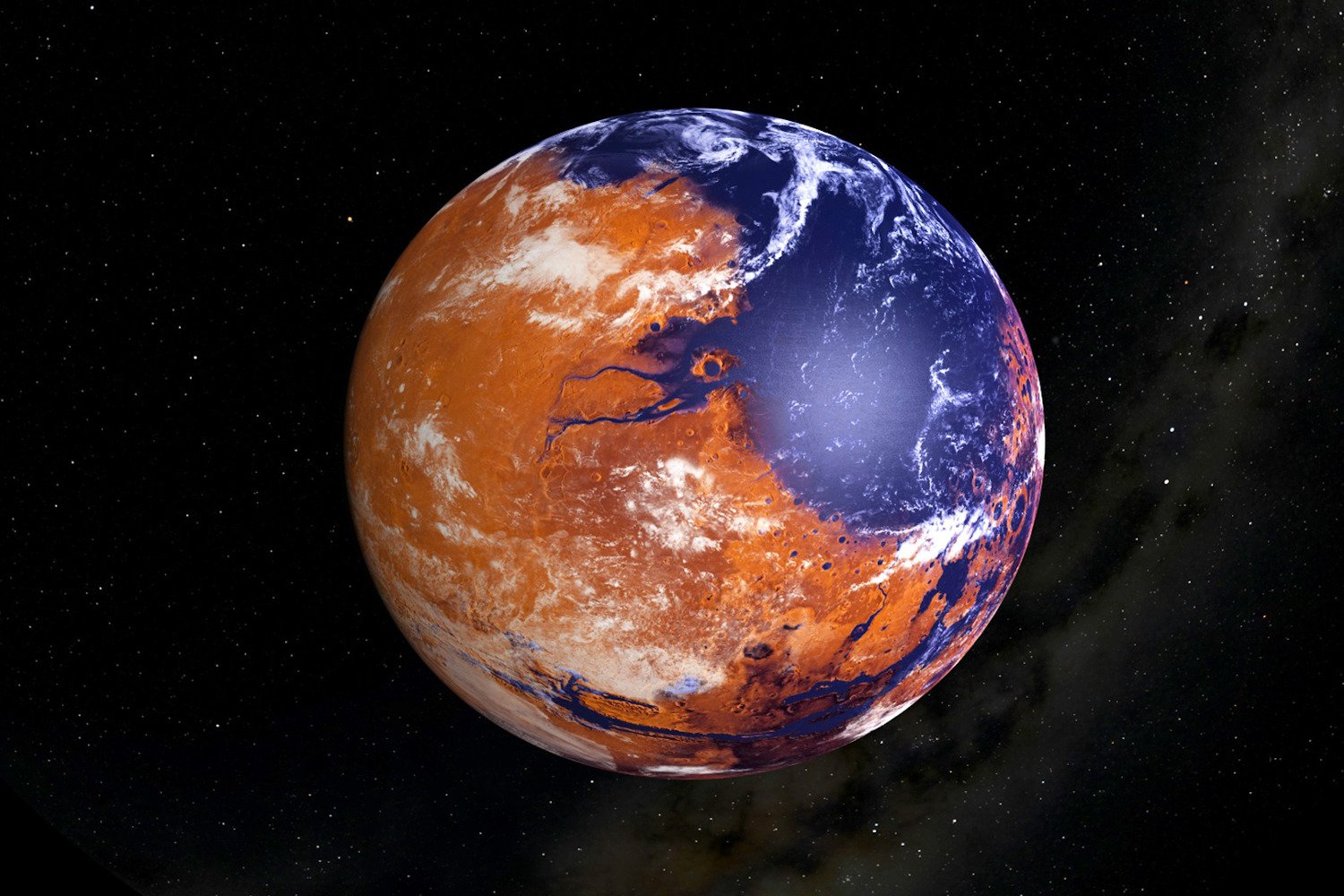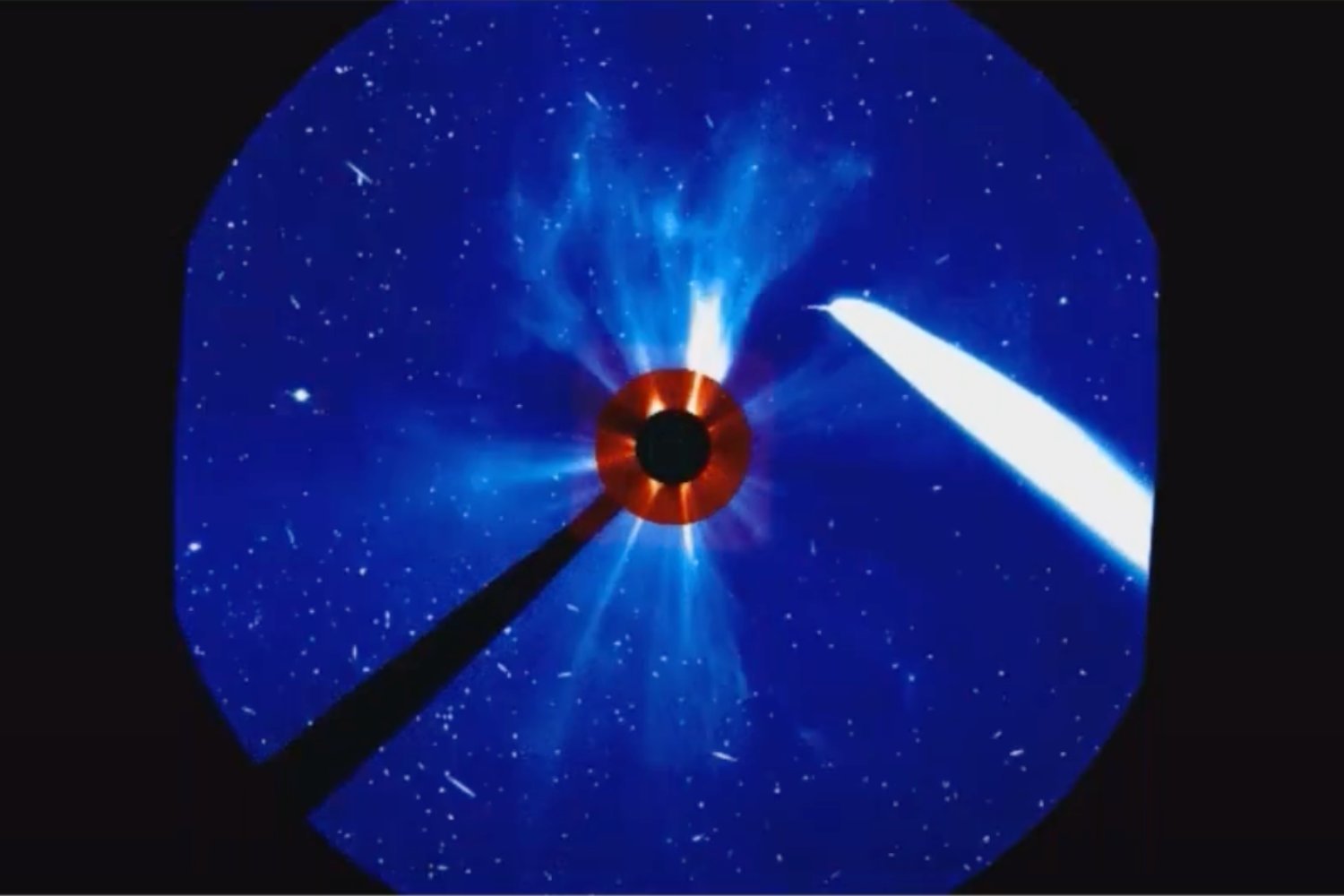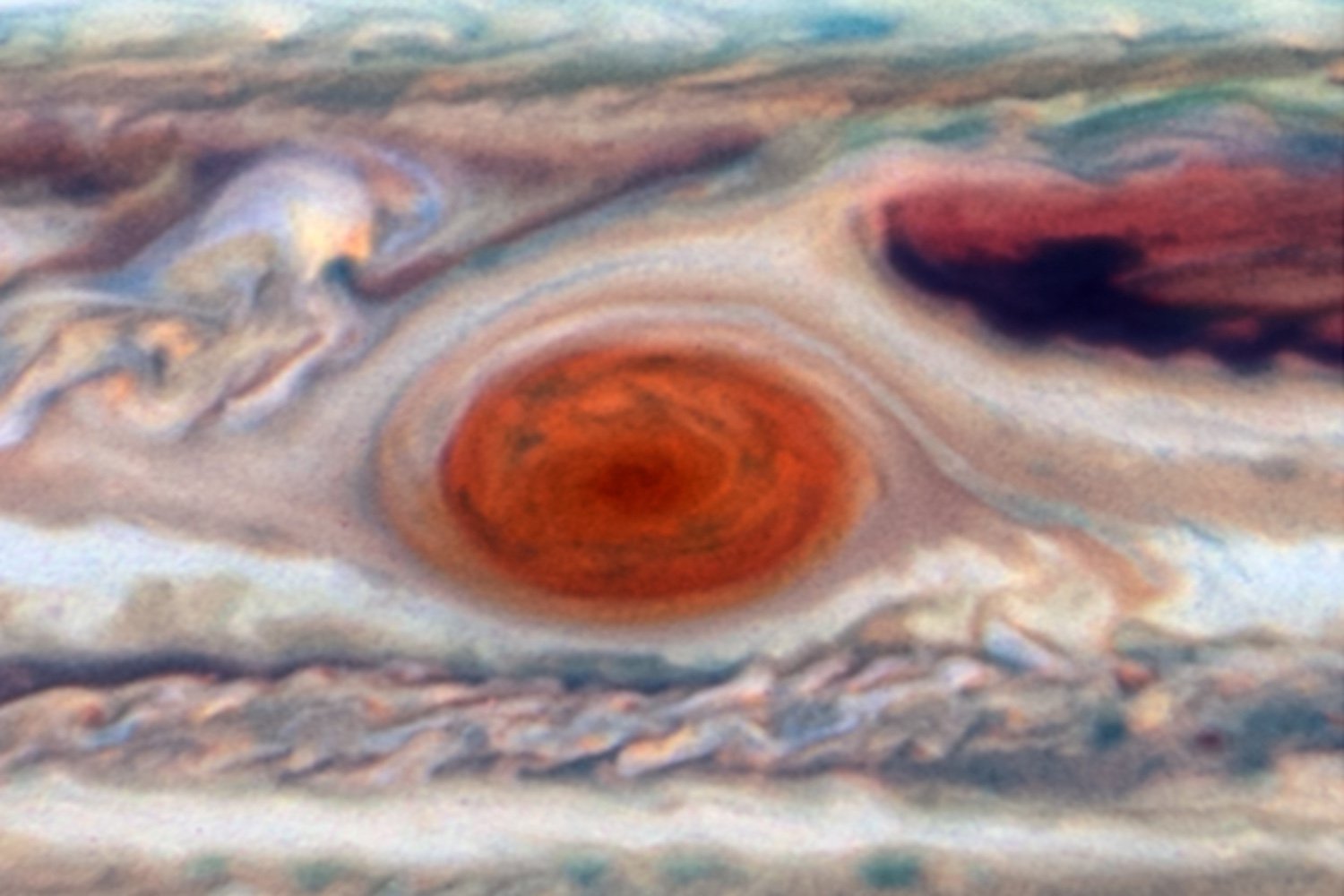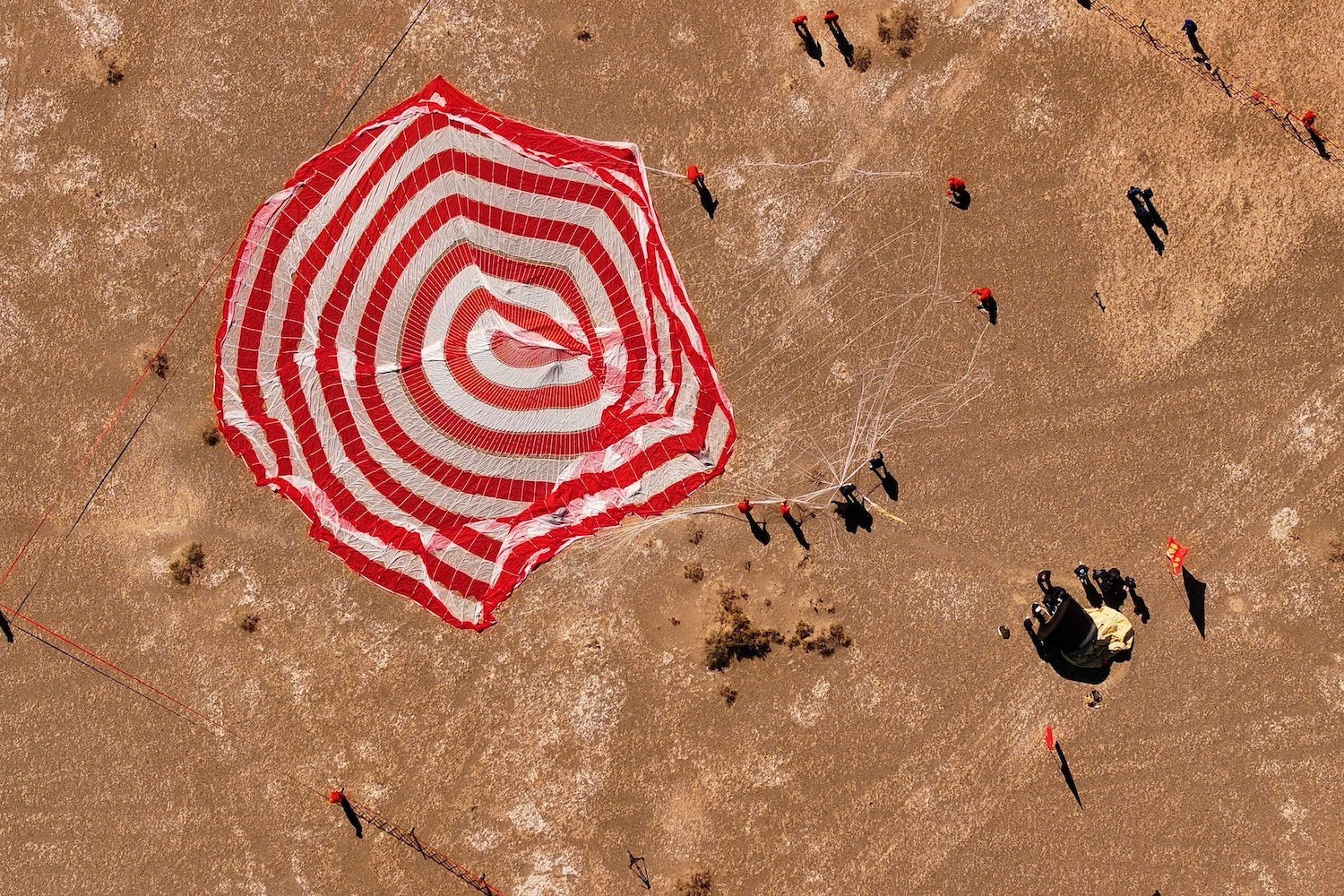Mars, often envisioned as a desolate red landscape, reveals a surprising seasonal transformation at its south pole. Recent images from the European Space Agency’s (ESA) Mars Express orbiter showcase a stunning winter wonderland, draped in white frost. This icy spectacle, however, isn’t formed by typical snowfall.
This Martian winter scene is composed of layers of carbon dioxide ice (dry ice) and dust, blanketing the south pole and the surrounding Australe Scopuli region. During the Martian winter, temperatures plummet to a frigid -190 degrees Fahrenheit (-123 degrees Celsius). While Mars does experience snowfall, it’s unlike Earth’s. Martian snow comes in two forms: water ice and dry ice. Due to the thin Martian atmosphere, water ice sublimates, turning directly into gas before reaching the surface. Dry ice, however, does land on the surface, contributing to the icy landscape.
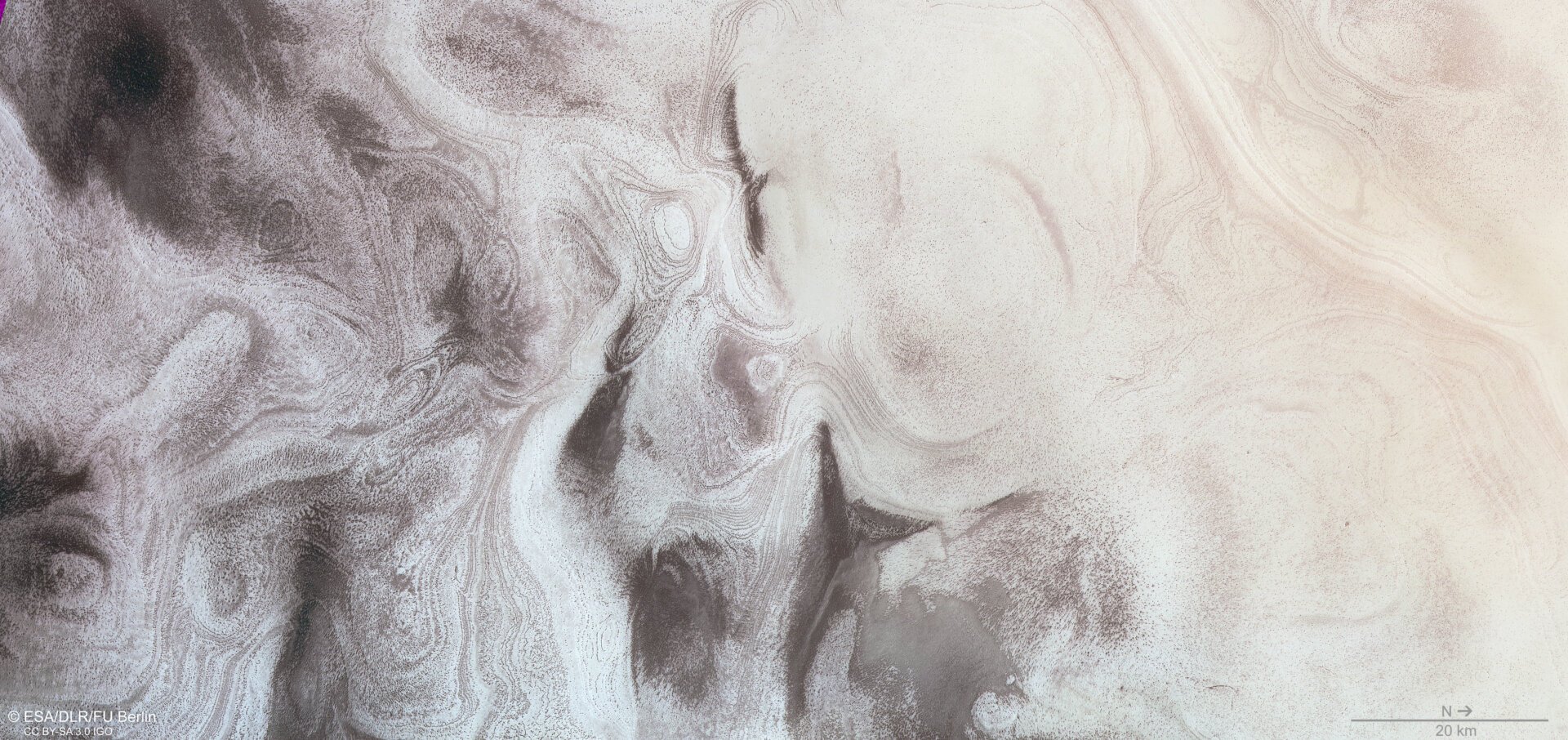 Frosty swirls layered across the South Pole Of Mars. Credit: ESA/DLR/FU Berlin
Frosty swirls layered across the South Pole Of Mars. Credit: ESA/DLR/FU Berlin
Interestingly, these images were captured in June, during Mars’ southern hemisphere summer. As the sun’s rays intensify, the seasonal ice begins to retreat. This is evident in the darker patches visible on the left side of the image, where the ice is sublimating.
The Dynamic Cycle of Martian Dry Ice
The interaction of sunlight and dry ice creates a fascinating dynamic. Sunlight penetrates the translucent upper layers of dry ice, causing the ice beneath to sublimate. This process forms pockets of trapped gas, building pressure until the upper ice layers crack. Jets of gas erupt, carrying dark dust from below to the surface. This dust then settles in distinctive fan-shaped patterns, sculpted by Martian winds.
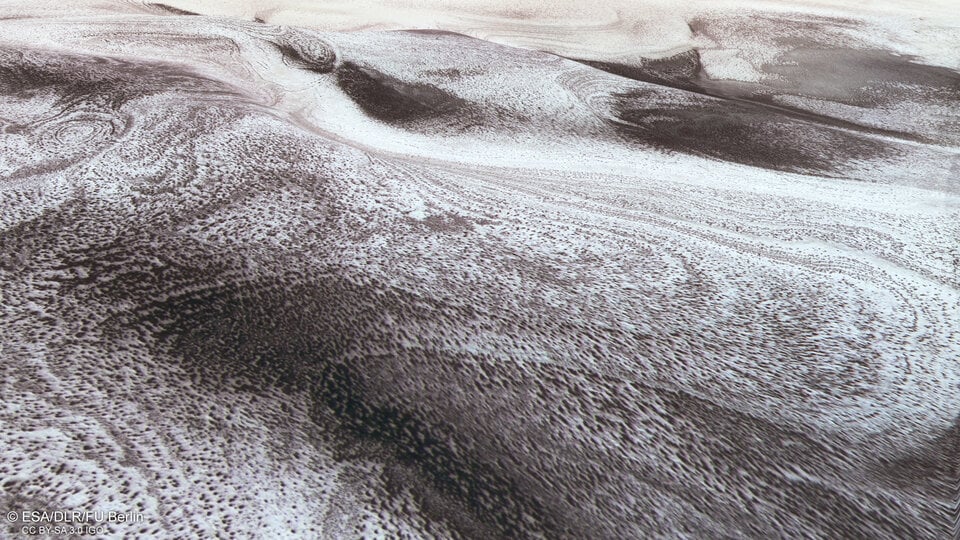 A view across icy hills in the Australe Scopuli region near the south pole of Mars. Credit: ESA/DLR/FU Berlin
A view across icy hills in the Australe Scopuli region near the south pole of Mars. Credit: ESA/DLR/FU Berlin
The image of Australe Scopuli’s seasonal ice caps vividly displays the swirling layers of ice and dust. Captured by the High Resolution Stereo Camera on Mars Express, this image allows scientists to create a digital terrain model, revealing the topography of this unique landscape. The fan-shaped dust deposits, marking the boundaries between the layered ice, are clearly visible.
Mars Express: Two Decades of Martian Exploration
Launched in 2003, ESA’s Mars Express has been providing invaluable insights into the Red Planet for over two decades. The spacecraft has achieved remarkable feats, including compiling the most comprehensive map of Mars’ atmospheric chemical composition, closely observing the Martian moons Phobos and Deimos, and tracing the history of water on Mars. While the mission also carried the Beagle 2 lander, contact was lost upon arrival, preventing it from conducting scientific operations. Despite this setback, Mars Express continues to unveil the secrets of Mars, showcasing its diverse and ever-changing landscape.
Conclusion: A Frozen Paradox
The Martian south pole presents a captivating paradox: a winter wonderland revealed during the summer season. The dynamic interplay of sunlight, dry ice, and dust creates a constantly evolving landscape, offering valuable insights into the complex processes shaping the Martian environment. The continued observations from Mars Express promise further discoveries, unveiling the mysteries hidden within this icy realm.



